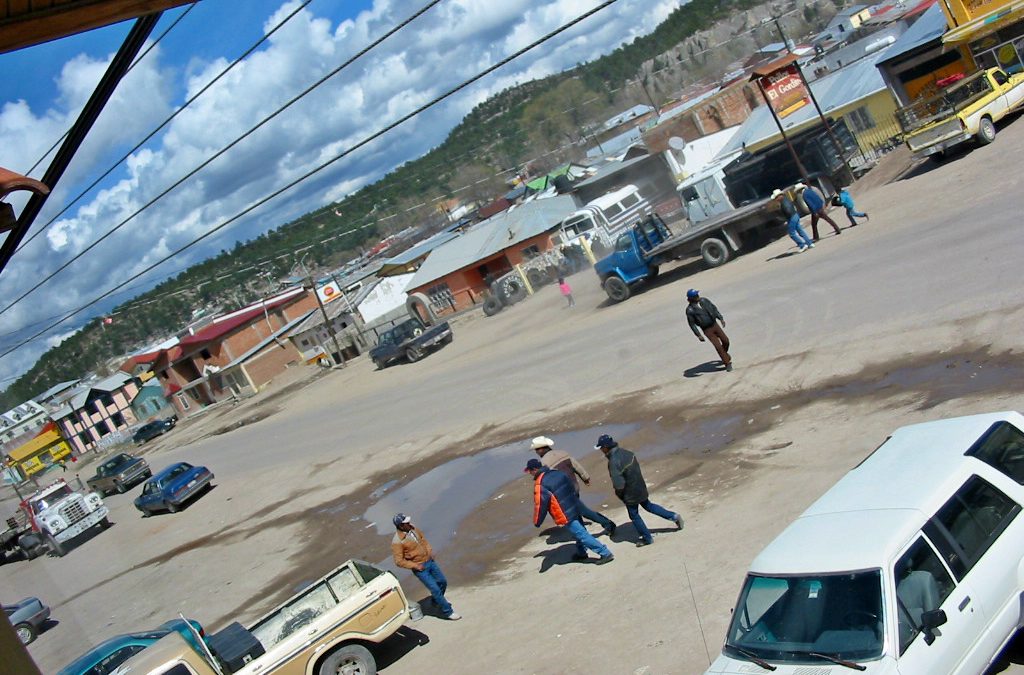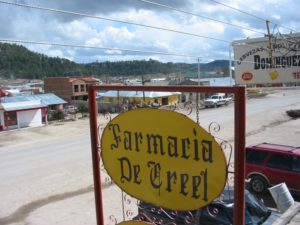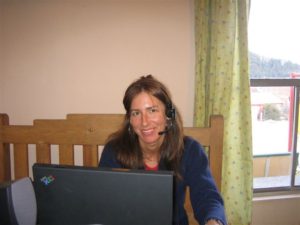
Where Are You in The Expatriate Journey? A Reflection of My First Experience
(In my previous blog post, I provided insights into the Stages of the Expatriate Acculturation Journey. With an introduction of those stages, now I’d like to share my first experience moving abroad and what my journey as an expat looked like…)
My First Experience Abroad in a Cowboy & Indigenous Indian Town
Who would’ve anticipated that from my first abroad experience that began in January 2005, I would go on to have five more international moves in less than seven years? I certainly wouldn’t have, and neither would those who knew me. How did this come to be? I’ll begin with the first experience, the first in a series of blog posts.
Stage 1. Pre-departure: Am I really doing this?
When the opportunity came my husband’s way to help a company build their Mexico business and operations from the ground up, it was a challenge that he couldn’t refuse. But, what did this mean for us? What about my career? I had recently started a new position at Intel, a role that involved working with people from around the globe. The technology was complex; the stakeholders were complex; there was resistance; there was dysfunction. The role required a significant amount of influence to build trust on a project that already had a bad reputation. My first 90-days were critical to my success and the success of the project. How was I going to be able to perform effectively abroad? The answer is in the former. My team and stakeholders were global – I would never meet most of them in person. This was part of the culture.
But, how was I going to approach this with my manager? I seized the moment in a comfortable space – we were at the gym on the elliptical. When I mentioned to him that I needed to “talk to him,” he said, “don’t tell me you’re quitting.” My response – “depends…” I explained the situation, and he responded with “You’ll work remotely. Your team is global; there’s really nothing different. Let’s try it out.”
Since the organizational culture supported a balance of office and remote work, the transition to 100% remote was an organic process. To prepare, I began to spend one day per week in the office, then I began working 100% remotely while still in the US to ensure that my team felt supported and were prepared. It was going to require a degree of trust and self-management on both ends. During the entire process, I never had one person question my decision or doubt my ability to perform from afar. I only recall support, professionally. Perhaps they were skeptical or had doubt, but it was not voiced. If anything, I formed connections with others who had also lived abroad and with those living in undeveloped countries. I don’t’ think any of us realized it at the time, but they were my support channels. 
Coincidentally, I was in the process of selling my home. I was able to sell it, have a moving sale, and move somewhere temporarily until my move. I even had someone to watch my cats until I could get a pulse on the situation and come back for them.
Then came the administrative challenges – Where do I get my mail sent? What do we do with our cars? What about banking, cell phone service, health insurance, healthcare and good internet connection? That is an entire topic on its own that I will spare the details of in this blog. I decided to store my car for when I traveled back, and my husband drove our SUV to Mexico.
A few weeks prior to departure, my husband Ryan asked me if I would be flexible in going to a town called Creel instead of Oaxaca. Creel? I Googled it. A Cowboy and Indian town that is the gateway to the Copper Canyon at nearly 8,000 feet elevation. Population around 5,000 with the nearest airport three hours away in Chihuahua City. It’s a recreation mecca, the Copper Canyon is four times the volume of the Grand Canyon. Being the outdoors fanatic that I am, I embraced the idea. My only requirement was that we had a high-speed internet connection.
Ryan drove to Mexico, and two weeks later, I hopped on a plane and met him in Chihuahua. He found the only place for rent that had a phone line. This is important to mention because back then, you may wait up to two years to get a phone line. We upgraded from dial-up to high speed and ran the phone line from the downstairs laundromat and pharmacy (farmacia) to our apartment. You heard right, our phone line was in the laundromat.
Stage 3 Culture Shock: Is this really happening?
Why not the honeymoon period? Two days after arriving, Ryan had to leave on a 10-day trip. Yes, two days in a new country – I am terrible at Spanish, no friends, and am learning to drive a manual car in a foreign country. Besides immersing myself in work (Intel greatly benefited from my situation), I quickly became resourceful. I went to the rustic Best Western and asked if I could pay for use of their spa and gym. They were bewildered with my request but accepted. This became my sanctuary, especially during the cold nights since temperatures were in the high 60’s – 70’s during the day, often hail in the evenings, and typically below freezing at night.
 I then went to a basketball game with the owner of the casa that we rented and attended a birthday party with his family afterward. When we arrived to the birthday party, I was offered a cerveza, and I accepted. I sat with the women (women and men socialized separately), and was the only female drinking. I later realized that the attendance of the basketball game with the husband was not a cultural norm and in that social circle, women typically didn’t drink. For a gringa, it was, however, acceptable. The next day was a Saturday, so I drove a mountainous road to a remote recreation area to go hiking solo. After asking several people in broken Spanish, I found the trail I was looking for. The wildness and spirituality were overwhelming.
I then went to a basketball game with the owner of the casa that we rented and attended a birthday party with his family afterward. When we arrived to the birthday party, I was offered a cerveza, and I accepted. I sat with the women (women and men socialized separately), and was the only female drinking. I later realized that the attendance of the basketball game with the husband was not a cultural norm and in that social circle, women typically didn’t drink. For a gringa, it was, however, acceptable. The next day was a Saturday, so I drove a mountainous road to a remote recreation area to go hiking solo. After asking several people in broken Spanish, I found the trail I was looking for. The wildness and spirituality were overwhelming.
Ryan had introduced me to a few people in the community prior to his trip, and I am forever thankful to the women who invited me over for dinner, coffee, and trips to the hot springs. We are friends to this day. They provided my intellectual outlet and helped me with the day-to-day. I learned that fresh vegetables were delivered to small mom and pop markets on Thursdays, and Mennonites brought fresh bread and cheese on Saturday. Fresh vegetables consisted of wilted broccoli with pre-washed spinach as a treat. There were few restaurants and only two bars of which only one would you want to venture in. The result was that we spent virtually no money. I made hummus with lime (you could not buy lemons) and mashed them with a fork. We made a lot of soup.
However, I realized it was important to get into a routine. Since India was a core part of my team, we rotated who shared the burden of night meetings every month. My manager would check-in to make sure that I took a break in the afternoon on the nights we had to work. I would take a hike, then go the gym or bicycle in Tarahumaran country (Tarahumaran Indians are known as the ultra-marathon “runners” who Nike discovered). Notice a theme – an organizational culture, leadership, and teammates that supported not only my situation but were aware of other’s situations. In India, some people took a bus two hours to work each day, women needed safe transport to work, and the monsoon season caused electrical and internet outages. I now had something in common with my counterparts there. I had empathy.
If only video conference was common then and my co-workers could see where I was working… and if only I would’ve had a coach or a community of first-timers to confide in, to tell me it was ok to have the ups and downs, to feel like the trailing spouse, to work through not being able to wander the halls.
 The reality was that it was my first international move and to parts of Mexico extremely remote and highly traditional with high rates of poverty. Some of the Tarahumarans still lived in remote cave dwellings, didn’t speak Spanish and subsisted on very basic diets. There wasn’t a honeymoon period; it was humbling and forever changed me. I adventured as much as I could, and I established Mexican friendships. Even though I took the time each day for exercise or my outlet in nature, I found myself working long hours from my house with minimal daily integration and contact with the community. English was not commonly spoken, and there were no formal Spanish courses being taught or meetups or professional groups. Women played a traditional role in society. I often felt isolated.
The reality was that it was my first international move and to parts of Mexico extremely remote and highly traditional with high rates of poverty. Some of the Tarahumarans still lived in remote cave dwellings, didn’t speak Spanish and subsisted on very basic diets. There wasn’t a honeymoon period; it was humbling and forever changed me. I adventured as much as I could, and I established Mexican friendships. Even though I took the time each day for exercise or my outlet in nature, I found myself working long hours from my house with minimal daily integration and contact with the community. English was not commonly spoken, and there were no formal Spanish courses being taught or meetups or professional groups. Women played a traditional role in society. I often felt isolated.
Each person’s experience is unique, and there are no hard and fast timetables to adjusting to your new life. But, there are tools and strategies that make this process faster and easier. This incredible experience is as much personal as it is geographic; your journey will be defined by how you react to the more challenging moments.
My next chapter begins with our move to Oaxaca, which presented an entirely new set of challenges and experiences that will stay with me for a lifetime.



 even if there is an issue, so I know that I cannot expect them to openly discuss an issue or debate with a superior.
even if there is an issue, so I know that I cannot expect them to openly discuss an issue or debate with a superior.